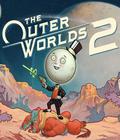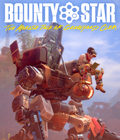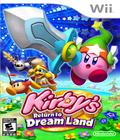When we last saw Kirby, it was in the experimental Kirby: Mass Attack. It was an excellent game for the Nintendo DS that will be remembered as one of the last big titles for the successful portable system. It also wasn't a traditional Kirby game because you didn't use enemy powers to your advantage. Those looking for classic gameplay will be happy to learn that his latest adventure, Kirby's Return to Dream Land, brings back everything one expects from a proper Kirby adventure.
The plot is just as simple as the rest of Kirby's adventure games. On the planet Pop Star, Kirby is up to his usual antics. In this case, he's running away from King Dedede and Waddle Dee while carrying a strawberry shortcake above his head. Suddenly, a rift in space appears and a ship is seen passing through, losing most of its pieces before crash-landing in the field. The trio, along with Meta Knight, goes to investigate when they find the alien pilot Magolor, who's been knocked out by the crash. He awakens and realizes that he's stuck on Pop Star unless he gets the pieces necessary to repair his ship, the Lor Starcutter. After volunteering to help, Kirby and the others explore the planet to find the ship pieces and help Magolor fix his ship and return home.
Kirby's Return to Dream Land marks a return to basics, as Kirby can once again swallow up enemies and either digest them or spit them back out to defeat enemies, break blocks, or trigger switches. Some enemies, when digested, produce abilities that Kirby can copy and use. Most of the series mainstays return, such as the ability to create sparks, use beam swords, use a parasol and breathe fire. Joining them are some new abilities, such as whips that can grab small items from afar, leaves that can cut at a very close range, and water that can produce waves to break anything in their path. Collect food to increase energy, and collect stars to earn extra lives. At the completion of each level, you can catapult Kirby into the clouds; landing on certain cloud heights gives you a certain amount of stars as a reward. The basics that form the foundation for past Kirby titles remain intact in this entry.
In addition to new weapons, the team has also given Kirby some new abilities. With some shaking of the Wii Remote, Kirby can now swallow multiple enemies at a time, large heavy blocks, or large enemies and spit them out as a projectile that breaks everything in its path until it disappears off-screen. Enemies that glow let Kirby unleash special weapon abilities that, while timed, end up unleashing devastating attacks that affect both enemies and the environment. A fully powered beam sword, for example, gives you the ability to control a destructive orb of power while the flame ability calls forth a dragon-shaped fire stream to fly across the screen and. The sword ability creates blades, kendo sticks and cleavers that can occupy one-third of the screen.
Each regular ability now comes with different moves that can be activated either through button holds or button/direction combinations. The water ability might let Kirby send out a small ground-hugging wave, but he can also ride around on that wave. The cutter boomerang can now cut ropes and spider threads. Finally, there's the block ability, which veterans might never use but is good to have nonetheless.
All of the new and old techniques come in handy in discovering each level's secrets. Doors and paths remain hidden in the background, and those with keen eyes will be able to spot most of them the first time. Getting to those doors remains a challenge, though, as the roadblocks come in the form of blocks that can only be destroyed with a particular ability or items that can only be reached if you boost yourself with a different ability or correctly guess which path to take. More than anything else, this becomes the main reason to replay levels as you struggle to capture all of the hidden energy spheres.
Like past Kirby titles, collecting all of the energy spheres reveals the game's true ending, and they also contribute to the unlocking of special rooms in the Lor Starcutter. The rooms are divided into three categories. Transformation rooms let you mess around with the different abilities and outfit them before entering a level. Challenge rooms give you a chance to use one ability in a custom designed level; you need to make it to the goal as quickly as possible while still acquiring the highest possible score. Finally, there are two minigames that can be opened. The first is a throwing contest where you have to throw shurikens at a moving target board, and the second has you using bazookas to destroy a rampaging robot.
The game also has an interesting campaign multiplayer component. Up to four players can play the game in a drop-in/drop out style that many games employ nowadays. The process is seamless, and while it does decrease the total life count by one every time a player enters, it also replaces it should the player leave. While you can choose to play as a differently colored Kirby, you can also choose to go as King Dedede, Meta Knight, or Waddle Dee, with the first player always filling the role of Kirby. Each character has different abilities, and you can initiate team maneuvers or attacks at any time. It's good that the action never feels too chaotic for four players — something that can't be said for the likes of New Super Mario Bros. Wii and LittleBigPlanet. It's fairly easy to track down who is where, and there's rarely a time when players get left behind. With the architecture of the levels, the game makes for a good multiplayer platforming experience.
The Kirby games have always had the reputation of being easy, and Kirby's Return to Dream Land certainly exemplifies that. Even with the twist near the end of the game, none of the boss fights feel particularly difficult. Except for later fights, you can usually come away unscathed during a boss battle and have it last less than five minutes. The real challenge comes from obtaining the hidden energy spheres, but those who expected a Kirby: Mass Attack level of difficulty will be slightly disappointed.
Aside from the lack of difficulty, fans will miss some things from the series' earlier entries. The ability to ride large hamsters, last seen in Kirby's Dream Land 3, is nowhere to be found. The ability combination feature of Kirby 64: The Crystal Shards is also gone. While players have had at least one game to deal with the loss of the former, the latter is sorely missed since it was a great mechanic that encouraged players to experiment and discover new attacks.
The graphics are good but not exactly the best the series has seen. The game retains the series' trademark bright colors, and each level always has something active in the foreground or background to view if you take a moment to stop and look. Animations are well done, especially the Kirby dances at the end of levels, and the various costumes Kirby gets to don per ability look great. The problem is that the graphics follow Nintendo's common Wii standards instead of the standards for Super Mario Galaxy 2 or Kirby's Epic Yarn. Expect the 480p resolution to come through with no anti-aliasing in tow, something that could have been easily avoided before release.
The controls mimic the simplicity of the series. The Wii Remote turned sideways is the only control scheme allowed. The d-pad controls movement, the A button is for blocks, the 1 button initiates everything from swallowing to using abilities, and the 2 button controls jumps. Remote shaking is only used to get out of grabs or initiate the ability to suck in larger objects. The game controls well enough with a great response time and some uncomplicated maneuvers used to perform certain abilities. No one should have trouble with the game's control scheme.
The sound is well done, and that's because the musical score has more adventurous overtones than before. Mostly orchestrated, it becomes a perfect fit for the game, especially after being treated to some remixed classic Kirby tunes. There aren't many voices to the game, so expect plenty of pantomiming during cut scenes. Most of the effects are good, though it doesn't feel like there's much bass to some of the effects, making them feel hollow or too compressed.
Kirby's Return to Dream Land remains a solid but simple game in the series. Though the real challenge lies in collecting everything to see the true ending, the game remains easy to finish, especially with the new abilities. Multiplayer is a blast, and the different character choices give it some replayability for those who want to experience the game from multiple angles. The sound is excellent, and while the graphics could be a tad better, the amount of post-campaign content available after collecting the required amount of orbs gives the game some legs. Platforming fans will have lots of fun with this title as long as they understand that they may wrap up the main quest sooner than expected.
Score: 8.5/10
More articles about Kirby's Return To Dream Land Deluxe











 Kirby's Return to Dream Land is a side-scrolling adventure game where you can play on your own or with up to three of your friends.
Kirby's Return to Dream Land is a side-scrolling adventure game where you can play on your own or with up to three of your friends.


















